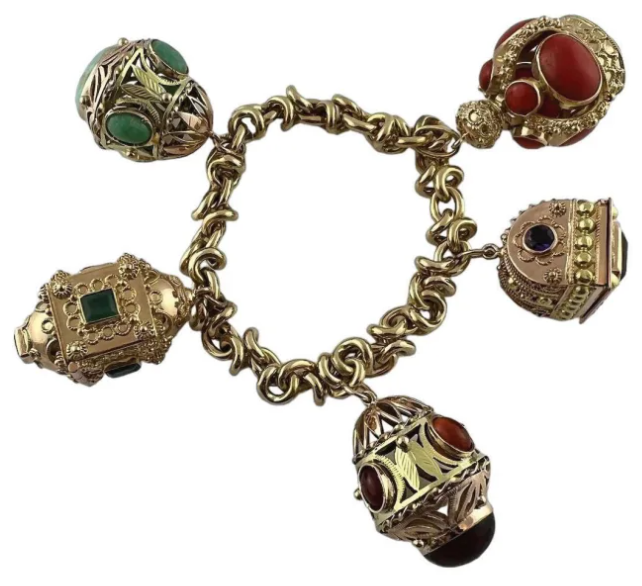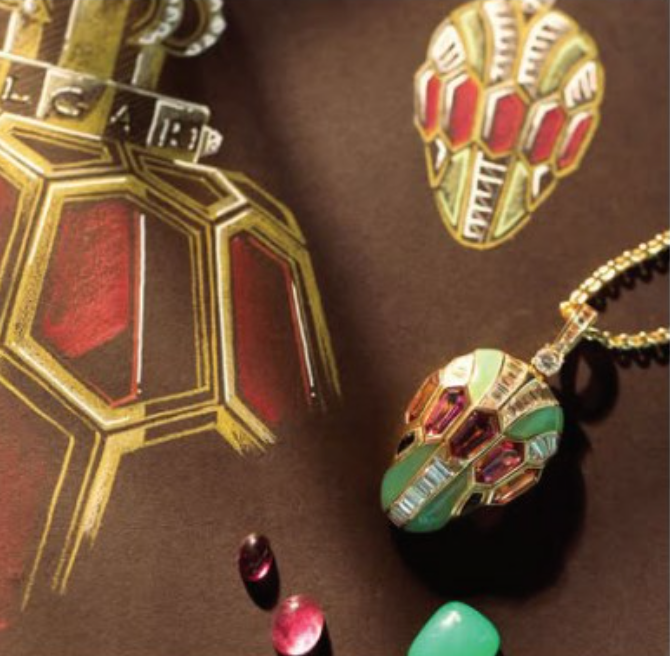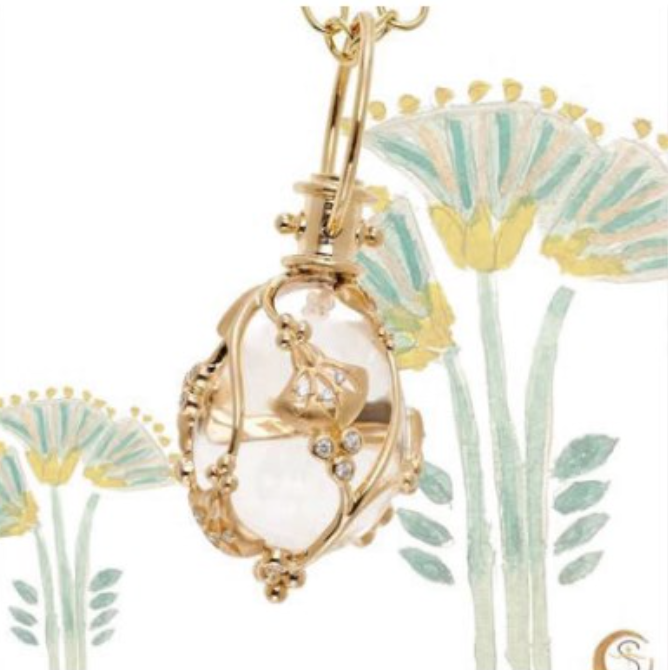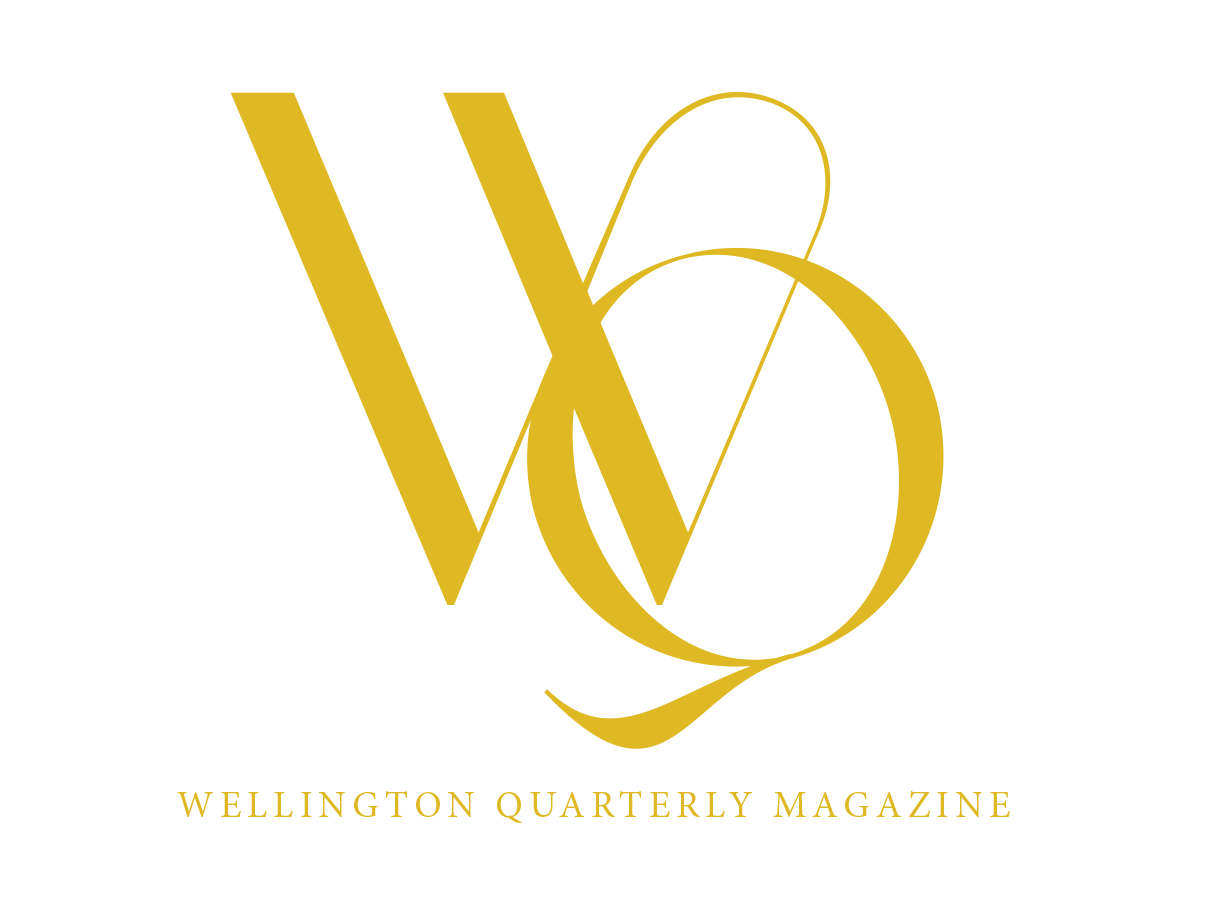PERFECTLY CHARMING
Live Beautifully
These are more than charms, they are true treasures.

Etruscan charms and jewelry date back to the Etruscan civilization (circa 900–200 BCE) in what is now Italy, particularly in Tuscany, Lazio, and Umbria. They were first produced intricately by the native Etruscans, who were highly skilled in goldsmithing and jewelry-making.
Their skill in creating intricate charms, amulets, and adornments held both decorative and symbolic significance for the very wealthy and sometimes used as awards for a soldier’s act of bravery in battle.
As they were more widely recreated in Medieval Europe beginning in the 5th Century, they became a symbol of immense wealth and status. Using granulation techniques of fusing time precious stones into solid gold, crafting scrolled filigree into precise patterns and gently adorning some with religious symbols and even serpents, said to ward off evil spirits, these charms, amulets or pendants, became highly sought after as the artisans who made them died off.
The work and art of these pieces greatly influenced future Roman jewelry and even today, are used as inspiration in many fashion and jewelry brands because of their unique artistic forms and patterns.
Primarily containing 14K gold (which was more readily mined in the era), the charms were not of the small quiet kind we are familiar with today. Ranging in size of ¾” to over 2”, they were adorned with stones such as Carnelian, Amber, Lapis, Ruby and in some cases, diamonds.
Nobels and Queens would often wear Etruscan pieces as large rings, earrings, necklaces and bracelets to show off their enormous wealth. Nobleman and Kings fashioned them on belt buckles or shoe ornaments to do the same.
Today, the inspiration from these antiquities shows up in pieces created by Bulgari in their Monete Collection, Temple St. Claire with a concentration on Celestial motifs or Elizabeth Locke, who commonly incorporates cabochon and antique intaglios in her designs.
Walking over the Rialto in Venice or the Ponte Vecchio in Florance, will lead you to small shops where you can find authentic Etruscan charms either singularly or affixed to a bracelet or necklace and costing as much as $3,000 for a single artifact and possibly $20,000 and more for a collective grouping.
The bold style and art of this era is also apparent in soft fashion in brands such as Versace, whose famous Medusa patterns is reminiscent of the Etruscan style with Baroque gold and designs. Dolce & Gabbana uses fillagree patterns and ancient gold coin prints farmed from the Etruscan motifs and Gucci, McQueen, Fendi and Valentino have all been inspired to incorporate this style with fibula -like motifs, lion heads, beading and fillagree, each harking back to early Romans and Ancient Egyptians.
There is no other way to describe these rare gems other than, “perfectly charming.”
Christina Grazia Poggi is an Italian writer and frequent contributor to WQ Magazine living in Como, Italy. A ‘shopper’ by nature, Christina usually lusts over items for hours before she buys them. Sometimes.




